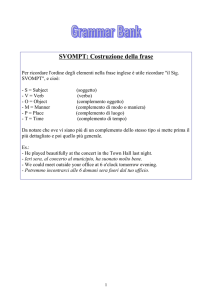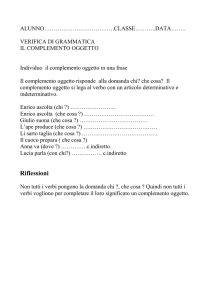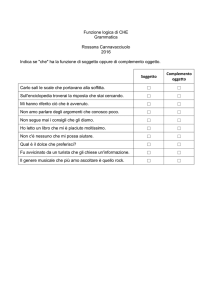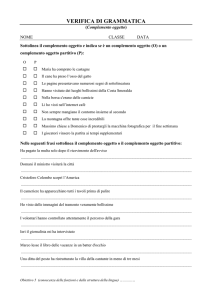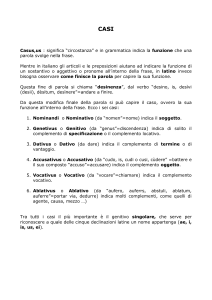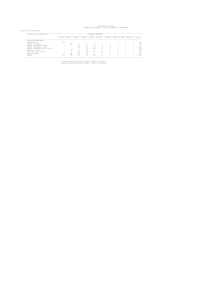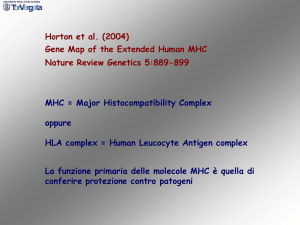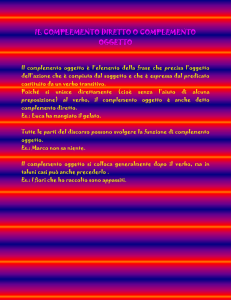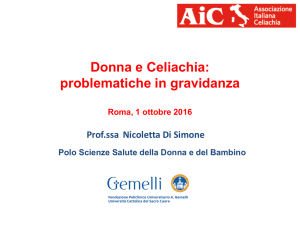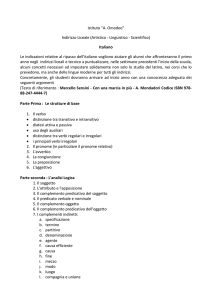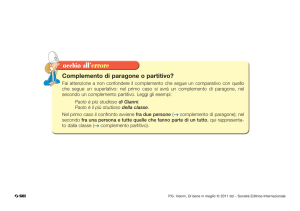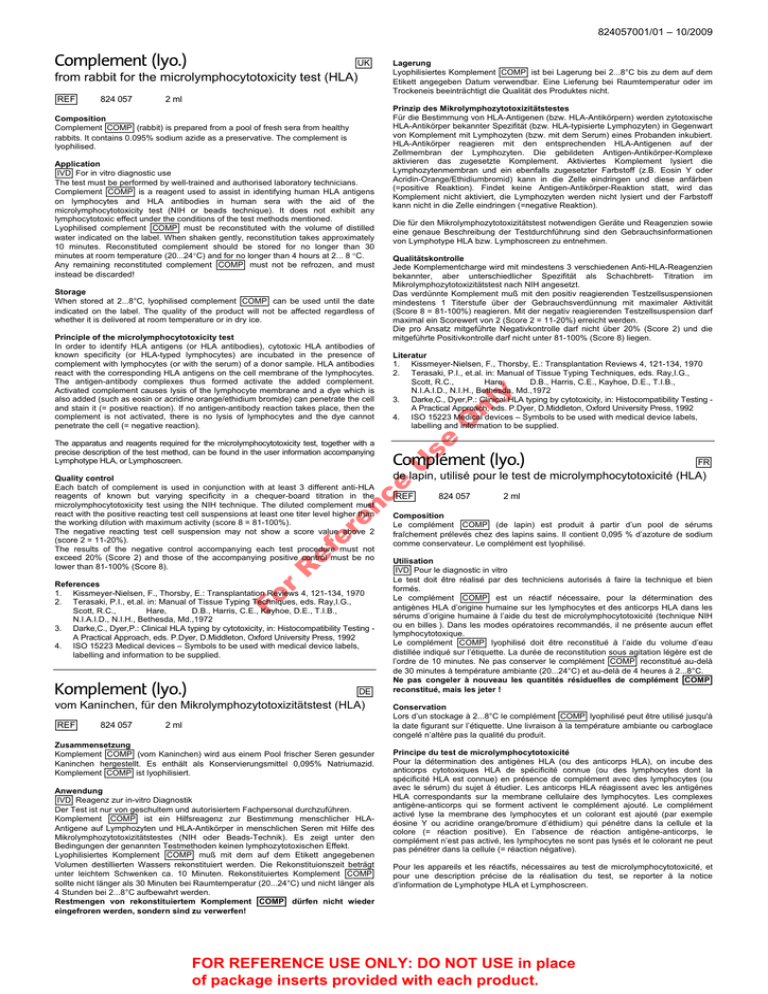
824057001/01 – 10/2009
Complement (lyo.)
[UK]
from rabbit for the microlymphocytotoxicity test (HLA)
2 ml
Principle of the microlymphocytotoxicity test
In order to identify HLA antigens (or HLA antibodies), cytotoxic HLA antibodies of
known specificity (or HLA-typed lymphocytes) are incubated in the presence of
complement with lymphocytes (or with the serum) of a donor sample. HLA antibodies
react with the corresponding HLA antigens on the cell membrane of the lymphocytes.
The antigen-antibody complexes thus formed activate the added complement.
Activated complement causes lysis of the lymphocyte membrane and a dye which is
also added (such as eosin or acridine orange/ethidium bromide) can penetrate the cell
and stain it (= positive reaction). If no antigen-antibody reaction takes place, then the
complement is not activated, there is no lysis of lymphocytes and the dye cannot
penetrate the cell (= negative reaction).
The apparatus and reagents required for the microlymphocytotoxicity test, together with a
precise description of the test method, can be found in the user information accompanying
Lymphotype HLA, or Lymphoscreen.
Literatur
1. Kissmeyer-Nielsen, F., Thorsby, E.: Transplantation Reviews 4, 121-134, 1970
2. Terasaki, P.I., et.al. in: Manual of Tissue Typing Techniques, eds. Ray,I.G.,
Scott, R.C.,
Hare,
D.B., Harris, C.E., Kayhoe, D.E., T.I.B.,
N.I.A.I.D., N.I.H., Bethesda, Md.,1972
3. Darke,C., Dyer,P.: Clinical HLA typing by cytotoxicity, in: Histocompatibility Testing A Practical Approach, eds. P.Dyer, D.Middleton, Oxford University Press, 1992
4. ISO 15223 Medical devices – Symbols to be used with medical device labels,
labelling and information to be supplied.
Complément (lyo.)
en
er
ef
R
Fo
r
References
1. Kissmeyer-Nielsen, F., Thorsby, E.: Transplantation Reviews 4, 121-134, 1970
2. Terasaki, P.I., et.al. in: Manual of Tissue Typing Techniques, eds. Ray,I.G.,
Scott, R.C.,
Hare,
D.B., Harris, C.E., Kayhoe, D.E., T.I.B.,
N.I.A.I.D., N.I.H., Bethesda, Md.,1972
3. Darke,C., Dyer,P.: Clinical HLA typing by cytotoxicity, in: Histocompatibility Testing A Practical Approach, eds. P.Dyer, D.Middleton, Oxford University Press, 1992
4. ISO 15223 Medical devices – Symbols to be used with medical device labels,
labelling and information to be supplied.
Komplement (lyo.)
[DE]
vom Kaninchen, für den Mikrolymphozytotoxizitätstest (HLA)
[REF]
824 057
2 ml
Zusammensetzung
Komplement [COMP] (vom Kaninchen) wird aus einem Pool frischer Seren gesunder
Kaninchen hergestellt. Es enthält als Konservierungsmittel 0,095% Natriumazid.
Komplement [COMP] ist lyophilisiert.
Anwendung
[IVD] Reagenz zur in-vitro Diagnostik
Der Test ist nur von geschultem und autorisiertem Fachpersonal durchzuführen.
Komplement [COMP] ist ein Hilfsreagenz zur Bestimmung menschlicher HLAAntigene auf Lymphozyten und HLA-Antikörper in menschlichen Seren mit Hilfe des
Mikrolymphozytotoxizitätstestes (NIH oder Beads-Technik). Es zeigt unter den
Bedingungen der genannten Testmethoden keinen lymphozytotoxischen Effekt.
Lyophilisiertes Komplement [COMP] muß mit dem auf dem Etikett angegebenen
Volumen destillierten Wassers rekonstituiert werden. Die Rekonstituionszeit beträgt
unter leichtem Schwenken ca. 10 Minuten. Rekonstituiertes Komplement [COMP]
sollte nicht länger als 30 Minuten bei Raumtemperatur (20...24°C) und nicht länger als
4 Stunden bei 2...8°C aufbewahrt werden.
Restmengen von rekonstituiertem Komplement [COMP] dürfen nicht wieder
eingefroren werden, sondern sind zu verwerfen!
[FR]
de lapin, utilisé pour le test de microlymphocytotoxicité (HLA)
ce
Quality control
Each batch of complement is used in conjunction with at least 3 different anti-HLA
reagents of known but varying specificity in a chequer-board titration in the
microlymphocytotoxicity test using the NIH technique. The diluted complement must
react with the positive reacting test cell suspensions at least one titer level higher than
the working dilution with maximum activity (score 8 = 81-100%).
The negative reacting test cell suspension may not show a score value above 2
(score 2 = 11-20%).
The results of the negative control accompanying each test procedure must not
exceed 20% (Score 2) and those of the accompanying positive control must be no
lower than 81-100% (Score 8).
Qualitätskontrolle
Jede Komplementcharge wird mit mindestens 3 verschiedenen Anti-HLA-Reagenzien
bekannter, aber unterschiedlicher Spezifität als Schachbrett- Titration im
Mikrolymphozytotoxizitätstest nach NIH angesetzt.
Das verdünnte Komplement muß mit den positiv reagierenden Testzellsuspensionen
mindestens 1 Titerstufe über der Gebrauchsverdünnung mit maximaler Aktivität
(Score 8 = 81-100%) reagieren. Mit der negativ reagierenden Testzellsuspension darf
maximal ein Scorewert von 2 (Score 2 = 11-20%) erreicht werden.
Die pro Ansatz mitgeführte Negativkontrolle darf nicht über 20% (Score 2) und die
mitgeführte Positivkontrolle darf nicht unter 81-100% (Score 8) liegen.
y
Storage
When stored at 2...8°C, lyophilised complement [COMP] can be used until the date
indicated on the label. The quality of the product will not be affected regardless of
whether it is delivered at room temperature or in dry ice.
Die für den Mikrolymphozytotoxizitätstest notwendigen Geräte und Reagenzien sowie
eine genaue Beschreibung der Testdurchführung sind den Gebrauchsinformationen
von Lymphotype HLA bzw. Lymphoscreen zu entnehmen.
nl
Application
[IVD] For in vitro diagnostic use
The test must be performed by well-trained and authorised laboratory technicians.
Complement [COMP] is a reagent used to assist in identifying human HLA antigens
on lymphocytes and HLA antibodies in human sera with the aid of the
microlymphocytotoxicity test (NIH or beads technique). It does not exhibit any
lymphocytotoxic effect under the conditions of the test methods mentioned.
Lyophilised complement [COMP] must be reconstituted with the volume of distilled
water indicated on the label. When shaken gently, reconstitution takes approximately
10 minutes. Reconstituted complement should be stored for no longer than 30
minutes at room temperature (20...24°C) and for no longer than 4 hours at 2... 8 °C.
Any remaining reconstituted complement [COMP] must not be refrozen, and must
instead be discarded!
Prinzip des Mikrolymphozytotoxizitätstestes
Für die Bestimmung von HLA-Antigenen (bzw. HLA-Antikörpern) werden zytotoxische
HLA-Antikörper bekannter Spezifität (bzw. HLA-typisierte Lymphozyten) in Gegenwart
von Komplement mit Lymphozyten (bzw. mit dem Serum) eines Probanden inkubiert.
HLA-Antikörper reagieren mit den entsprechenden HLA-Antigenen auf der
Zellmembran der Lymphozyten. Die gebildeten Antigen-Antikörper-Komplexe
aktivieren das zugesetzte Komplement. Aktiviertes Komplement lysiert die
Lymphozytenmembran und ein ebenfalls zugesetzter Farbstoff (z.B. Eosin Y oder
Acridin-Orange/Ethidiumbromid) kann in die Zelle eindringen und diese anfärben
(=positive Reaktion). Findet keine Antigen-Antikörper-Reaktion statt, wird das
Komplement nicht aktiviert, die Lymphozyten werden nicht lysiert und der Farbstoff
kann nicht in die Zelle eindringen (=negative Reaktion).
O
Composition
Complement [COMP] (rabbit) is prepared from a pool of fresh sera from healthy
rabbits. It contains 0.095% sodium azide as a preservative. The complement is
lyophilised.
se
824 057
U
[REF]
Lagerung
Lyophilisiertes Komplement [COMP] ist bei Lagerung bei 2...8°C bis zu dem auf dem
Etikett angegeben Datum verwendbar. Eine Lieferung bei Raumtemperatur oder im
Trockeneis beeinträchtigt die Qualität des Produktes nicht.
[REF]
824 057
2 ml
Composition
Le complément [COMP] (de lapin) est produit à partir d’un pool de sérums
fraîchement prélevés chez des lapins sains. Il contient 0,095 % d’azoture de sodium
comme conservateur. Le complément est lyophilisé.
Utilisation
[IVD] Pour le diagnostic in vitro
Le test doit être réalisé par des techniciens autorisés à faire la technique et bien
formés.
Le complément [COMP] est un réactif nécessaire, pour la détermination des
antigènes HLA d’origine humaine sur les lymphocytes et des anticorps HLA dans les
sérums d’origine humaine à l’aide du test de microlymphocytotoxicité (technique NIH
ou en billes ). Dans les modes opératoires recommandés, il ne présente aucun effet
lymphocytotoxique.
Le complément [COMP] lyophilisé doit être reconstitué à l’aide du volume d’eau
distillée indiqué sur l’étiquette. La durée de reconstitution sous agitation légère est de
l’ordre de 10 minutes. Ne pas conserver le complément [COMP] reconstitué au-delà
de 30 minutes à température ambiante (20...24°C) et au-delà de 4 heures à 2...8°C.
Ne pas congeler à nouveau les quantités résiduelles de complément [COMP]
reconstitué, mais les jeter !
Conservation
Lors d’un stockage à 2...8°C le complément [COMP] lyophilisé peut être utilisé jusqu'à
la date figurant sur l’étiquette. Une livraison à la température ambiante ou carboglace
congelé n’altère pas la qualité du produit.
Principe du test de microlymphocytotoxicité
Pour la détermination des antigènes HLA (ou des anticorps HLA), on incube des
anticorps cytotoxiques HLA de spécificité connue (ou des lymphocytes dont la
spécificité HLA est connue) en présence de complément avec des lymphocytes (ou
avec le sérum) du sujet à étudier. Les anticorps HLA réagissent avec les antigènes
HLA correspondants sur la membrane cellulaire des lymphocytes. Les complexes
antigène-anticorps qui se forment activent le complément ajouté. Le complément
activé lyse la membrane des lymphocytes et un colorant est ajouté (par exemple
éosine Y ou acridine orange/bromure d’éthidium) qui pénétre dans la cellule et la
colore (= réaction positive). En l’absence de réaction antigène-anticorps, le
complément n’est pas activé, les lymphocytes ne sont pas lysés et le colorant ne peut
pas pénétrer dans la cellule (= réaction négative).
Pour les appareils et les réactifs, nécessaires au test de microlymphocytotoxicité, et
pour une description précise de la réalisation du test, se reporter à la notice
d’information de Lymphotype HLA et Lymphoscreen.
FOR REFERENCE USE ONLY: DO NOT USE in place
of package inserts provided with each product.
824 057
2 ml
Composizione
Complemento [COMP] (di coniglio) viene prodotto a partire da un pool di sieri freschi
di conigli sani. Contiene lo 0,095% di sodio azide come conservante. Il complemento
è liofilizzato.
Composición
El complemento [COMP] (de conejo) se fabrica a partir de un pool de sueros frescos
de conejos sanos. Como conservante, contiene azida sódica al 0,095%. El
complemento está liofilizado.
Aplicaciones
[IVD] Sólo para el diagnóstico in vitro
El ensayo debe ser realizado por técnicos de laboratorio bien preparados y
autorizados.
Complemento [COMP] es un reactivo auxiliar para determinar antígenos HLA
humanos en complemento leucocitos y anticuerpos anti-HLA en sueros humanos con
la prueba de microlinfocitotoxicidad (NIH o Beads). En las condiciones de los
métodos de prueba citados, no muestra efecto linfotóxico.
El complemento [COMP] liofilizado se debe reconstituir con el volumen de agua
destilada indicado en la etiqueta. El tiempo de reconstitución es de aprox. 10 minutos,
agitando suavemente. El [COMP] reconstituido no se debe conservar más de 30
minutos a temperatura ambiente (20...24°C) y no más de 4 horas a 2... 8 °C.
Los restos de complemento [COMP] reconstituido no se deben congelar, sino
que se desecharán!
Conservación
A una temperatura de almacenamiento de 2... 8 °C, el complemento [COMP]
liofilizado se puede utilizar hasta la fecha indicada en la etiqueta. La entrega a
temperatura ambiente o ¡hielo seco, no perjudica la calidad del producto.
Principio de la prueba de microlinfocitotoxicidad
Para determinar los antígenos HLA (o anticuerpos anti-HLA), se incuban anticuerpos
anti-HLA citotóxicos de especificidad conocida (p.ej. linfocitos tipificados respecto al
HLA) en presencia de complemento, con linfocitos (o con el suero) de un probando.
Los anticuerpos anti-HLA reaccionan con los antígenos HLA correspondientes en la
membrana celular de los linfocitos. Los complejos antígeno-anticuerpo formados
activan el complemento añadido. El complemento activado lisa la membrana
linfocítica y un colorante añadido (p.ej. eosina Y o naranja de acridina /bromuro
etídico) puede penetrar en la célula y teñirla (= reacción positiva). Cuando no se
produce ninguna reacción antígeno-anticuerpo, el complemento no se activa, los
linfocitos no son lisados y el colorante no puede penetrar en el interior de las células
(= reacción negativa).
Los aparatos y reactivos necesarios para efectuar la prueba de microlinfocitotoxidad
así como una descripción exacta de la realización de la prueba se indican en las
informaciones de uso de Lymphotype HLA y Lymphoscreen.
en
ce
Uso
[IVD] Solo per la diagnostica in vitro
Il test deve essere effettuato da tecnici di laboratori autorizzati e ben preparati.
Complemento [COMP] è un reagente usato nel test di linfocitotossicità (tecnica NIH o
separazione con bigli) per la determinazione degli antigeni HLA presenti sui linfociti e
degli anticorpi HLA presenti nel siero umano. Seguendo le procedure d'uso dei test
citati non mostra alcun effetto citotossico.
Il complemento [COMP] liofilizzato va ricostituito con il volume di acqua distillata
indicato sull'etichetta. Il tempo necessario alla ricostituzione è di circa 10 minuti,
durante i quali il flacone va leggermente agitato. Il complemento [COMP] ricostituito
non deve essere conservato per più di 30 minuti a temperatura ambiente
(20...24 °C) o per più di 4 ore in frigorifero (2...8 °C).
Il complemento [COMP] ricostituito avanzato non deve essere ricongelato, ma
gettato via!
2 ml
y
[REF]
824 057
nl
[IT]
di coniglio per il test di microlinfocitotossicità (HLA)
[REF]
O
Complemento (lio.)
[ES]
de conejo, para la prueba de microlinfocitotoxicidad (HLA)
se
Références bibliographiques
1. Kissmeyer-Nielsen, F., Thorsby, E.: Transplantation Reviews 4, 121-134, 1970
2. Terasaki, P.I., et.al. in: Manual of Tissue Typing Techniques, eds. Ray,I.G.,
Scott, R.C.,
Hare,
D.B., Harris, C.E., Kayhoe, D.E., T.I.B.,
N.I.A.I.D., N.I.H., Bethesda, Md.,1972
3. Darke,C., Dyer,P.: Clinical HLA typing by cytotoxicity, in: Histocompatibility Testing A Practical Approach, eds. P.Dyer, D.Middleton, Oxford University Press, 1992
4. ISO 15223 Medical devices – Symbols to be used with medical device labels,
labelling and information to be supplied.
Complemento (lio.)
U
Contrôle de qualité
Chaque lot de complément a été utilisé avec au moins trois réactifs anti-HLA
différents de spécificité connue. Un titrage en „damier“ est réalisé lors d’un test de
microlymphocytotoxicité selon la méthode du NIH. Le complément dilué doit réagir
avec les suspensions cellulaires tests positives au moins jusqu'au titre supérieur à
celui de la solution de travail, avec une réaction maximale (score 8 = 81 à 100%). Les
suspensions cellulaires tests négatives ne doivent pas donner de résultats au dessus
de 2 (score 2 = 11 à 20%). Le témoin négatif, utilisé conjointement lors de chaque
prise d’essai, ne doit pas présenter une réaction supérieure à 20 %¨(score 2) et le
témoin positif, également utilisé conjointement, ne doit pas présenter une réaction
inférieure à 81-100 % (score 8).
ef
er
Conservazione
Il complemento [COMP] liofilizzato è utilizzabile entro la data impressa sull'etichetta
se conservato ad una temperatura di 2-8 °C. La consegna a temperatura ambiente o
ghiacco secco non compromette la qualità del prodotto.
Fo
r
R
Principio del test di microlinfocitotossicità
Per la determinazione degli antigeni HLA (o di anticorpi HLA) vengono incubati
anticorpi citotossici HLA di specificità nota (oppure linfociti tipizzati per HLA) e linfociti
(oppure siero) di un donatore in presenza di complemento. Gli anticorpi reagiscono
con i corrispondenti antigeni HLA presenti sulla membrana cellulare dei linfociti. I
complessi antigene-anticorpo così formatisi attivano il complemento, che a sua volta
lisa la membrana dei linfociti, permettendo così al colorante, anch'esso aggiunto, (p.e.
eosina o arancio di acridina/etidio bromuro) di penetrare nella cellula e di colorarla (=
reazione positiva). Se non ha luogo alcuna reazione antigene - anticorpo, il
complemento non viene attivato, i linfociti non subiscono lisi e il colorante non penetra
nelle cellule (= reazione negativa).
Le attrezzature e i reagenti necessari per il test di linfocitotossicità e la descrizione
dettagliata del procedimento si trovano nel foglietto illustrativo accluso a Lymphotype
HLA e Lymphoscreen.
Controllo di qualità
Ciascun lotto di complemento viene impiegato come titolazione incrociata nel test di
linfocitotossicità secondo il NIH con almeno 3 reagenti anti HLA differenti, di
specificità nota ma diversa.
Il complemento diluito deve reagire, con le cellule di controllo positive, ad una
titolazione almeno una volta superiore rispetto a quella utilizzata correntemente,
ottenendo la massima reattività (score 8 = 81-100%). Le cellule di controllo negativo
non devono avere score superiori a 2 (score 2 = 11-20%).
Il controllo negativo accluso per ciascun impiego non deve produrre risultati al di
sopra del 20% (score 2) e il controllo positivo, anch'esso accluso, non deve avere
risultati inferiori all'81-100% (score 8).
Bibliografia
1. Kissmeyer-Nielsen, F., Thorsby, E.: Transplantation Reviews 4, 121-134, 1970
2. Terasaki, P.I., et.al. in: Manual of Tissue Typing Techniques, eds. Ray,I.G.,
Scott, R.C.,
Hare,
D.B., Harris, C.E., Kayhoe, D.E., T.I.B.,
N.I.A.I.D., N.I.H., Bethesda, Md.,1972
3. Darke,C., Dyer,P.: Clinical HLA typing by cytotoxicity, in: Histocompatibility Testing A Practical Approach, eds. P.Dyer, D.Middleton, Oxford University Press, 1992
4. ISO 15223 Medical devices – Symbols to be used with medical device labels,
labelling and information to be supplied.
Control de Calidad
Cada lote de complemento se prepara con un mínimo de 3 reactivos anti-HLA
diferentes, de especificidad conocida pero distinta, como titulación de tablero de
ajedrez en la prueba de microlinfocitotoxicidad según NIH. El complemento diluído
debe reaccionar con las células positivas
reaccionantes en suspensión al menos un título superior que la dilución de trabajo
con una actividad máxima (puntuación 8 = 81-100%). Las células negativas
reaccionantes en suspensión no deben mostrar un valor superior a 2 (puntuación 2
=11-20%).
El control negativo realizado por preparación no debe ser superior al 20% (puntuación
2) y el control positivo no será inferior al 81 - 100% (puntuación 8).
Bibliografia
1. Kissmeyer-Nielsen, F., Thorsby, E.: Transplantation Reviews 4, 121-134, 1970
2. Terasaki, P.I., et.al. in: Manual of Tissue Typing Techniques, eds. Ray,I.G.,
Scott, R.C.,
Hare,
D.B., Harris, C.E., Kayhoe, D.E., T.I.B.,
N.I.A.I.D., N.I.H., Bethesda, Md.,1972
3. Darke,C., Dyer,P.: Clinical HLA typing by cytotoxicity, in: Histocompatibility Testing A Practical Approach, eds. P.Dyer, D.Middleton, Oxford University Press, 1992
4. ISO 15223 Medical devices – Symbols to be used with medical device labels,
labelling and information to be supplied.
____________________________________________________________________
[NL]
[IVD]
Voor in vitro gebruik
[REF]
824 057
2 ml
[COMP] Complément
[DK]
[IVD]
Til diagnostik brug i glas
[REF]
824 057
2 ml
[COMP] Komplement
[CZ]
[IVD]
Použití pro in vitro diagnostiku
[REF]
824 057
2 ml
[COMP] Komplement
| Biotest
M | Biotest, Industriestr. 1, D-63303 Dreieich,
Germany, www.biotest.de, [email protected]
Tel.: +49-6103-801-0, Fax: +49-6103-801-140
|
0197

![Delibera n.239 del 04/06/2013 [ file]](http://s1.studylibit.com/store/data/007209390_1-96cb2b433504f4e710f0f5d715344394-300x300.png)
